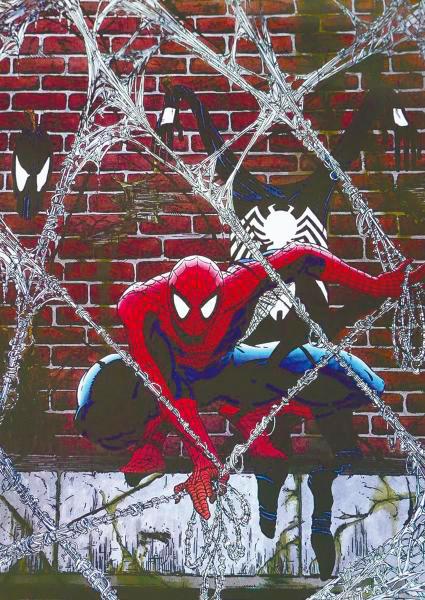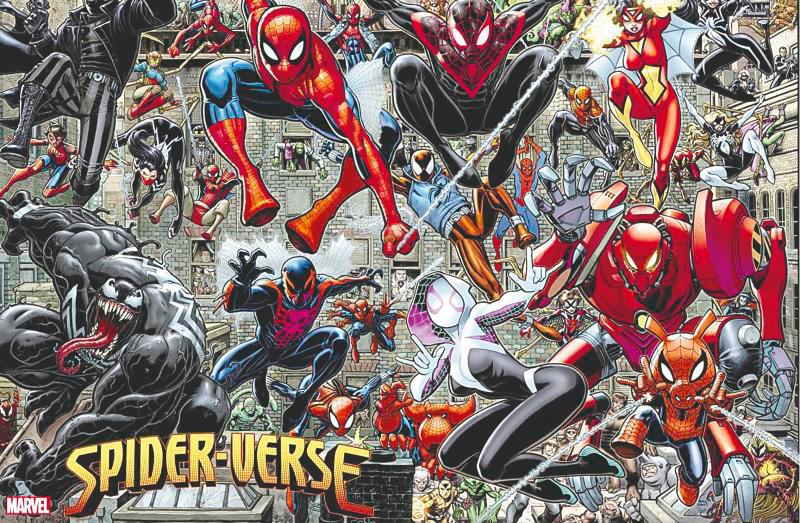FEW superheroes are as iconic as Marvel’s friendly neighbourhood Spider-Man. He has web-swung his way across every medium imaginable over the years. Even the most casual fan knows everything about him, from his origins to his skills and abilities. However, due to Spidey’s extensive background, some details of his tale have fallen through the gaps. With that in mind, here are some Spider-Man facts you might not be aware of.
He nearly didn’t get published
Back in the 1960s, Marvel challenged the famous Stan Lee with inventing a new character to retain the momentum gained by the Fantastic Four’s recent triumph. It was a mammoth task, but after studying other top-selling comic books and determining what worked and what did not, Stan presented Spider-Man to his publisher. The publisher was not a fan, stating that people dislike spiders and would not want a superhero with a spider theme. Instead, they collided in the middle, and Spider-first Man’s appearance would be in Amazing Fantasy, a comic series on the verge of being cancelled. The firm had unexpected record sales of Spider-Man’s inaugural issue, and the rest is history.
He was the first teen superhero
Spider-Man had a rather difficult sell, on top of the disagreeable spider theme. He was supposed to be the first teenage superhero who wasn’t a sidekick to an adult superhero. This was done to make him more relatable, aside from the novelty of his spider powers gimmick. After all, the majority of comic book readers are teenagers. It only made sense to have a hero that had to deal with some of the same issues as the reader. The formula succeeded, and many more young heroes followed.

It’s Spider-Man, not Spiderman
He was created to break the mould of previous superheroes. So when it came time to name Thor, Stan Lee decided to give him an appropriate name for the amazing hero. As a youngster, he was tempted to give him a name with “lad” or “boy”, but he opted against it. He was to be a hero in his own right, and such designations did not suit him. Stan Lee, the name we all know and love, finally arrived. He was particularly inspired by DC’s Superman. However, he wanted it to stand out, so he included a hyphen in the name. While some properties use them interchangeably, the correct spelling is “Spider-Man.”
His parents were CIA agents
Peter Parker was orphaned at an early age and raised by his aunt and uncle, but little is known about his parents. It was a mystery for a long time. They were eventually revealed to be CIA agents. The couple went on many missions together and even helped Wolverine out of a jam at one time. Unfortunately, they were killed in an aircraft crash organised by the nefarious Red Skull not long after giving birth to Peter.

His Spider Sense did more than you think
If you’re familiar with Spider-Man, you’ll know that one of his most potent talents is his signature Spider Sense. This heightened sense has alerted him of impending threats and saved his life several times. His Spidey Sense was always on, and practically hard to avoid. It was unaffected by darkness or blindness. That alone makes it incredible, but it is far more potent than you might expect. It alerted him of existential hazards to his well-being in addition to acute bodily threats. It would even warn him to any possible witnesses when he changed his costume, for example.
Iron Man designed his outfit
Spider-Man has an extensive wardrobe, but none is more recognisable than the Iron Spider Armour. In the MCU film franchise, The Iron Spider was a Stark-ified upgrade of the red and blue suit he ditched during Civil War. It was given to Peter by Tony Stark during a brief stint as his protege. The armour wowed fans with its three protruding spider legs and various colours.
Spider-Man went by several different names
What else inspired Stan Lee to develop the iconic Spider-Man? After witnessing a fly crawl across a wall at Marvel’s offices, the Marvel legend began brainstorming ideas for his next biggest hero. Believe it or not, your friendly neighbourhood hero had once been known as “Stick-to-Wall Man”, “Insect-Man”, “Fly-Man”, and “Mosquito-Man.”

Michael Jackson loves Spider-Man
The King of Pop was such a fan of the web-slinger that he attempted to buy Marvel in the 1990s, but the deal fell through due to the US$1 billion asking price. Not only that, but Michael Jackson wanted to portray Spider-Man on film, and approached Stan Lee about obtaining the film rights multiple times. Spidey would have looked awesome doing the moonwalk, too bad.
He’s Barack Obama’s favourite superhero
Spider-Man has garnered quite a fanbase since his beginnings, but did you know that one of his admirers is none other than Barack Obama? The former president made his affection for Spider-Man known at a number of child-centered events he attended, and he named Spider-Man as his favourite hero alongside Batman. Marvel had Spider-Man meet Obama in a special issue comic issued shortly before his inauguration as a thank you for his devotion to the character.
His webs were biodegradable
Spider silk is one of the most amazing materials known to man. It is extraordinarily flexible, thin, and stronger than steel pound for pound. Scientists are still trying to recreate it in the real world, but for a fictitious genius like Peter Parker, it was a piece of cake. His composite webs could imitate all of the benefits of natural spider silk, and could even entrap beings as powerful as the Hulk. He also created a wide range of specialised webs for usage in specific contexts. The one thing they all have in common is that they all disintegrate within an hour after he fires them, something New Yorkers were sure to appreciate.









